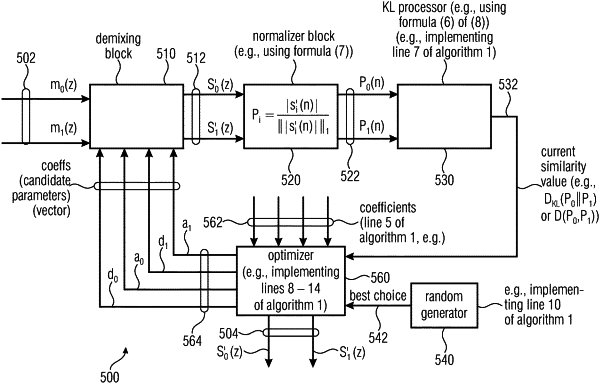| CPC G10L 21/0272 (2013.01) [G06N 5/01 (2023.01); G06N 7/01 (2023.01)] | 25 Claims |

|
1. An apparatus for acquiring a plurality of output signals, associated with different sound sources, on the basis of a plurality of input signals, in which signals from the sound sources are combined,
wherein the apparatus is configured to combine a first input signal, or a processed version thereof, with a delayed and scaled version of a second input signal, to acquire a first output signal;
wherein the apparatus is configured to combine a second input signal, or a processed version thereof, with a delayed and scaled version of the first input signal, to acquire a second output signal;
wherein the apparatus is configured to determine, using a random direction optimization:
a first scaling value, which is used to acquire the delayed and scaled version of the first input signal;
a first delay value, which is used to acquire the delayed and scaled version of the first input signal;
a second scaling value, which is used to acquire the delayed and scaled version of the second input signal; and
a second delay value, which is used to acquire the delayed and scaled version of the second input signal,
wherein the random direction optimization is such that candidate parameters form a candidates' vector, the candidates' vector being iteratively refined by modifying the candidates' vector in random directions,
wherein the random direction optimization is such that a metrics indicating the similarity, or dissimilarity, between the first and second output signals is measured, and the first and second output signals are selected to be those measurements associated with the candidate parameters associated with metrics indicating lowest similarity, or highest dissimilarity,
wherein the metrics is processed as a Kullback-Leibler divergence.
|